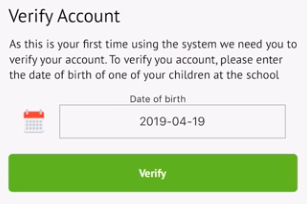

An error report email is generated upon each attempt and an error is logged by the sync client.
#GETAMPED2 CHECKING DUPLICATE LOGIN ISSUE UPDATE#
The provisioning attempt or update is retried by the sync client upon each export cycle, and continues to fail until the conflict is resolved. Similarly, if an object is updated with a non-unique UPN or ProxyAddress, the update fails. If there is an attempt to provision a new object with a UPN or ProxyAddress value that violates this uniqueness constraint, Azure Active Directory blocks that object from being created. The generic term “sync client” is used in this document to represent any one of these products. When I get it resolved (which I will!) I'll let you know what I did.The new behavior that this feature enables is in the cloud portion of the sync pipeline, therefore it is client agnostic and relevant for any Microsoft synchronization product including Azure AD Connect, DirSync and MIM + Connector. Thanks for everyone's input to this problem. My analysis on this approach is still incomplete. and using these fields in a VSAM file to determine whether a later claim is a duplicate or not.

I've been experimenting with taking the pertinent information from each claim "envelope", starting with the CA0 record and continuing through the XA0 record, and building a "key" using subscriber number, date of claim, diagnosis, etc. It's just that I was ending up with the same claim being processed 6 times, under 6 different claim numbers, because each claim was found 6 times in the file, with claim numbers simply assigned sequentially to the claims. The input file, at this point in my process, has already had claim numbers assigned to each group of records comprising a single claim. This does allow for the possibility of multiple files being FTPed before my process can run using them as input, as 3gm surmised. When my process runs, it "grabs" all generations of the dataset and proceeds from there.

Sorry for not having responded before this, but this issue got put on the back burner in deference to other more immediate problems.īy the way, these duplicate files that I experienced are FTPed to the mainframe, where they each create a new generation of a GDG dataset. Rich (in Minn.) RE: Checking for duplicate data kkitt (Programmer) 5 Dec 02 15:11 If I would encounter a duplicate record, it should generate an identical checksum value, and which would show up as already having been written out to the VSAM file.ĭoes anyone have a sample of such a checksum algorithm? Or any other ideas? I was wondering about generating a checksum for each record, then writing that checksum value out to a VSAM file. How can I pre-process this file to ensure that if any duplicate data is sent, I can bypass the duplicate records? There are no handy fields that are unique to each record. (This is on a large, corporate Amdahl system, with tons of storage, running IBM COBOL II on OS/390.) The file is fixed length, with a length of 320 bytes. The resulting file contained 1,687,236 records. (The company sending the file was having FTP problems, and so ended up sending the file six times, the first five files were 99.6 complete - 281,010 records out of 282,186), followed by one complete file.
#GETAMPED2 CHECKING DUPLICATE LOGIN ISSUE HOW TO#
Does anyone have a recommendation on how to check an input file for duplicate data? I've got a file that caused a ton of problems this past week by duplicating the correct set of records six times.


 0 kommentar(er)
0 kommentar(er)
